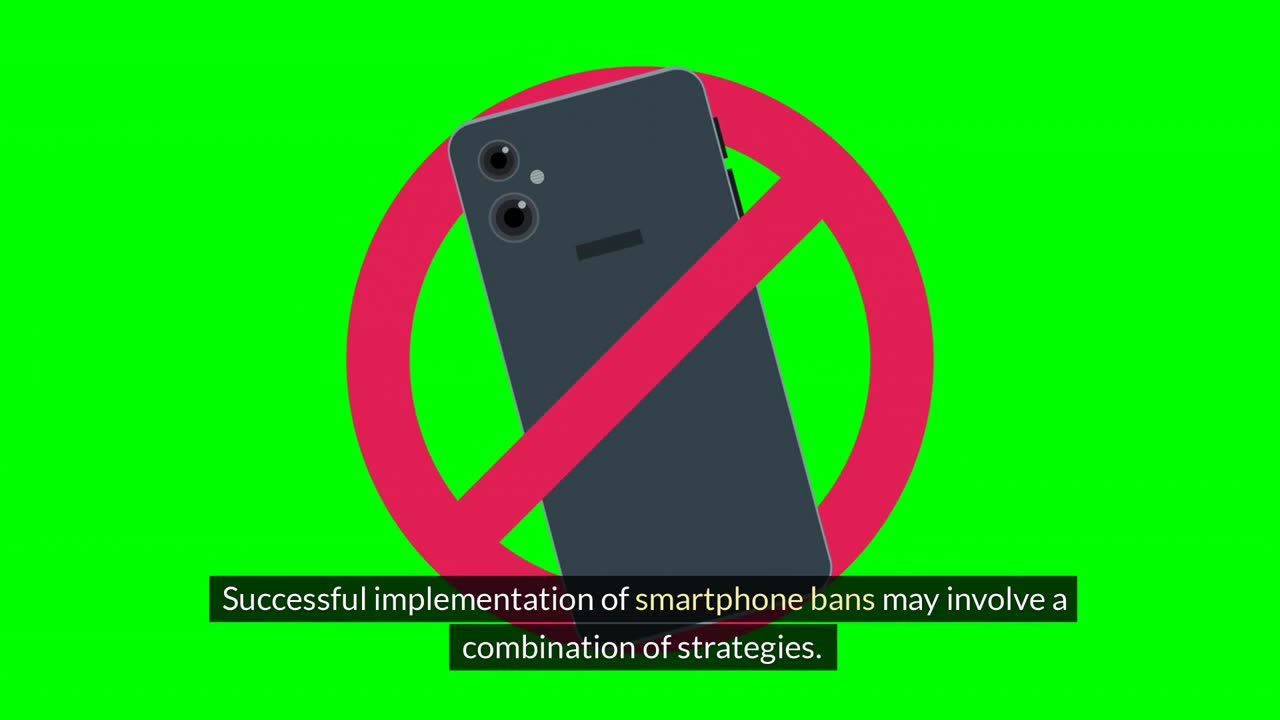Premium Only Content

the Fight to Limit Smartphone Use in Schools
# Battling Screen Addiction:
## Introduction: The Digital Dilemma
As smartphones become ubiquitous in our daily lives, a growing concern has emerged about their impact on children and teens. Across the United States, states like New York and California are considering sweeping policies to limit smartphone use in schools, following a trend of heightened scrutiny over the mental health of youth post-pandemic. But can these measures make a difference, and how will they be enforced?
## The Rise of Statewide Bans: A New Chapter in the Debate
### California's Bold Move
Earlier this week, California Governor Gavin Newsom called for a statewide ban on smartphones in classrooms, signaling a significant shift in policy. His proposal aims to curb the increasing dependency on digital devices that many educators and parents believe is detrimental to students' social skills and academic performance.
### New York's Initiative
Similarly, New York Governor Kathy Hochul has been advocating for legislation to limit smartphone use in schools. This initiative is part of a broader effort to address the mental health crisis among youth, exacerbated by the pandemic and the overuse of social media.
### Indiana's Early Adoption
Indiana has already taken concrete steps by signing into law a classroom ban on smartphones, set to begin this autumn. This law marks a proactive approach to managing the digital distraction in educational settings, setting a precedent for other states to follow.
## The Bipartisan Consensus: An Uncommon Agreement
### A Rare Political Harmony
The issue of smartphone use in schools has garnered rare bipartisan support. Legislators in both Republican and Democratic-controlled states are pushing for similar restrictions, recognizing the widespread concern about the negative impacts of excessive screen time.
### Florida's Strict Regulations
Florida implemented a state law last year that not only bans phones from classrooms but also blocks access to social media on school Wi-Fi. This law goes a step further by mandating that schools provide instruction on the social, emotional, and physical effects of social media.
### Local District Actions
Beyond state laws, individual school districts in states like Maine and Virginia are also tightening their rules around phone use. This trend is mirrored in Canadian provinces such as Ontario and Alberta, highlighting a broader North American movement towards stricter regulations.
## The Historical Context: A Long-Standing Debate
### Early Concerns
Concerns about phones in schools date back to the 1980s, with fears about distraction and their association with the drug trade. However, the tragic Columbine High School shooting in 1999 led to a reassessment, with many parents and schools viewing phones as essential for communication during emergencies.
### The Evolving Threat
As smartphones evolved, so did their impact on education. Phones became tools for distraction, cyberbullying, and cheating, reigniting the debate about their place in schools. New York City's strict ban in the early 2000s, which was later relaxed in 2015, exemplifies the ongoing struggle to balance safety and practicality.
## The Mental Health Crisis: Social Media's Dark Side
### Expert Warnings
The current wave of policies comes amid growing concerns about the mental health effects of social media on students. U.S. Surgeon General Vivek Murthy has likened social media to smoking, suggesting that platforms should carry warning labels about the risks of anxiety and depression.
### Alarming Statistics
Studies have shown that adolescents who spend more than three hours a day on social media face double the risk of mental health issues, such as anxiety and depression. This statistic, frequently cited by federal health offices, underscores the urgency of addressing screen time in schools.
### The Challenge of Learning
Dr. Murthy highlights the difficulty students face in balancing academic responsibilities with the distractions of social media. The constant barrage of notifications and messages makes it challenging for students to focus and build meaningful relationships in school.
## Implementation Challenges: Will the Policies Stick?
### Enforcement Difficulties
Despite the growing support for smartphone bans, enforcing these policies presents significant challenges. Ken Trump, president of the National School Safety and Security Services, emphasizes that successful implementation requires strong community consensus and consistent enforcement.
### Practical Concerns
In Los Angeles, board members voted to ban smartphones starting next year, but details on enforcement remain unclear. With large campuses and numerous students, monitoring compliance will be a complex task. Alyssa, an 18-year-old student, expresses skepticism about the feasibility of such bans in large schools.
### The Path Forward
To make these policies effective, schools will need to develop clear guidelines and robust monitoring systems. Engaging parents, teachers, and students in the conversation will be crucial to fostering a community-wide commitment to reducing smartphone dependency.
## Conclusion: A Call to Action
The debate over smartphone use in schools is more than a policy issue; it's about the well-being of the next generation. As we navigate this digital age, finding a balance between technology's benefits and its potential harms is essential. The efforts by states like California and New York represent a significant step forward, but the journey is far from over.
Thank you for reading HealthWatch. If you found this article informative, please like, share, and subscribe to our channel for more updates on education and health topics. Your engagement helps us bring you the latest and most relevant information. Feel free to leave your thoughts and questions in the comments below. Together, we can make a positive impact on the future of our children.
-
 LIVE
LIVE
SpartakusLIVE
3 hours ago#1 Saturday Spartoons on RUMBLE PREMIUM
9,793 watching -
 LIVE
LIVE
Mally_Mouse
21 hours ago🌶️ 🥵Spicy BITE Saturday!! 🥵🌶️- Let's Play: Tower Unite!
793 watching -
 58:59
58:59
MattMorseTV
2 hours ago $0.24 earned🔴Trump just BROKE Newsom.🔴
22.7K13 -
 18:14
18:14
Her Patriot Voice
2 hours agoWho Is WORSE for NYC: Trump Girl or Socialist?
3.91K19 -
 LIVE
LIVE
SavageJayGatsby
2 hours agoSpicy Saturday with Mally! | Road to 100 | $300 Weekly Goal for Spicy Bites!
1,086 watching -
 LIVE
LIVE
FomoTV
3 hours ago🚨 Swamp Theater: FBI Raids Bolton 🕵 Still NO Epstein Files, Trump's Troops & the Red Heifer Hoax 🐂 | Fomocast 08.23.25
45 watching -
 6:04:40
6:04:40
Akademiks
7 hours agoRoc Nation & Meg Thee Stallion did a 7 HOUR Deposition with me. Drake Secret Kid Finally Revealed.
27.7K1 -
 24:19
24:19
Stephen Gardner
3 hours ago🚨BREAKING: FBI Raid of John Bolton’s House Reveals THIS!
29.7K73 -
 8:31
8:31
MattMorseTV
5 hours ago $0.82 earnedTexas just did the IMPOSSIBLE.
27.6K56 -
 24:39
24:39
MYLUNCHBREAK CHANNEL PAGE
1 day agoInterdimensional Beings at Borobudur
38K19